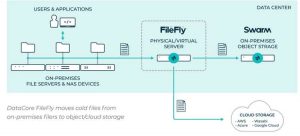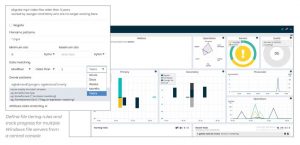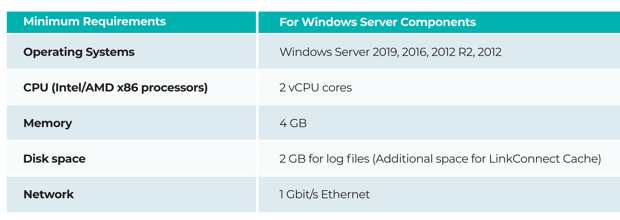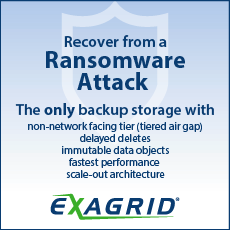DataCore FileFly 4.0 Enables Hybrid Cloud, Streamlines Data Center With Automated File Migration to Object Storage and Public Clouds
Automated policy-based file tiering solution helps Kinetiq and other organizations reduce costs, reclaim primary storage, and protect end user experience.
This is a Press Release edited by StorageNewsletter.com on November 18, 2021 at 2:02 pmDataCore Software, Inc. announced FileFly 4.0, a policy-based file tiering solution that helps enterprises automate the migration of historical data and achieve more agile IT architectures.
Click to enlarge
 FileFly helps organizations offload seldom-used files from expensive primary storage and continuously migrate this data to lower-cost object storage or hybrid or public cloud architectures – and in doing so, save time and costs while preserving a strong end user experience.
FileFly helps organizations offload seldom-used files from expensive primary storage and continuously migrate this data to lower-cost object storage or hybrid or public cloud architectures – and in doing so, save time and costs while preserving a strong end user experience.
Historical data can quickly consume available file servers and NAS resources. At the same time, the continuous backup of inactive files for ransomware protection can consume backup resources. To cope, IT teams must either purchase costly high-end NAS – if today’s persistent supply chain delays allow – or impact end users with potential downtime and poor performance when files are manually redistributed among more machines.
Click to enlarge
 FileFly’s automated cleanup frees up room for more critical, frequently accessed data and dramatically reduces backup windows and capacity. On average, the solution helps customers to free up 50 to 80% of file space and reclaim it for higher priority data. IT teams save time and avoid laborious and disruptive data migrations or archiving, while avoiding backups of files that have been migrated to object storage.
FileFly’s automated cleanup frees up room for more critical, frequently accessed data and dramatically reduces backup windows and capacity. On average, the solution helps customers to free up 50 to 80% of file space and reclaim it for higher priority data. IT teams save time and avoid laborious and disruptive data migrations or archiving, while avoiding backups of files that have been migrated to object storage.
IT organizations preferring to keep their data on-premises can utilize the company’s Swarm Object Storage as the target offload destination. Swarm offers scalability, durability and immutability to safeguard files and protect vs. cyberattacks. When enterprises wish to deploy workloads to hybrid or public clouds, FileFly can tier to S3-compatible cloud storage, including AWS, Azure, Google, and Wasabi – without disrupting Windows applications that are incompatible with the S3 protocol and otherwise would require a redesign.
“We oversee millions of videos and multiple petabytes of data as part of Kinetiq’s television intelligence platform and FileFly allows us to consolidate, access, and dynamically organize files at massive scale,” said Ken Przywara, director, infrastructure, Kinetiq. “This has been critical in helping us to optimize our storage operations and in turn prioritize on what matters most – delivering value to our customers – rather than managing storage infrastructure.”
Click to enlarge
Should migrated files need to be accessed again, FileFly recalls its file contents to the original file server without IT intervention, making it quick and easy for applications and users to find them. Migrated files remain accessible from the same folder where they were first stored; they are simply listed as offline, occupying zero bytes on disk until needed.
Readily installed on Windows servers, FileFly includes a savings calculator that allows IT organizations to estimate potential cost reductions by simulating the effect of different file tiering policies before scheduling any migrations.
“Enterprises can’t waste valuable time or budget on under-performing computing infrastructures when automated technology can so readily free them to achieve better capacity optimization,” said Abhijit Dey, chief product officer, DataCore. “DataCore FileFly and its automated data tiering technology is an easy to implement solution to achieve low-cost, scalable, long-term data retention and help keep data centers running at top efficiency.“
FileFly 4.0 is available from the company’s authorized partners WW and priced based on terabytes migrated from source file servers and NAS devices to object or cloud storage.
Resources:
Video: Automate Migrations of Seldom Used Files to Object Storage
FileFly
















 Subscribe to our free daily newsletter
Subscribe to our free daily newsletter


